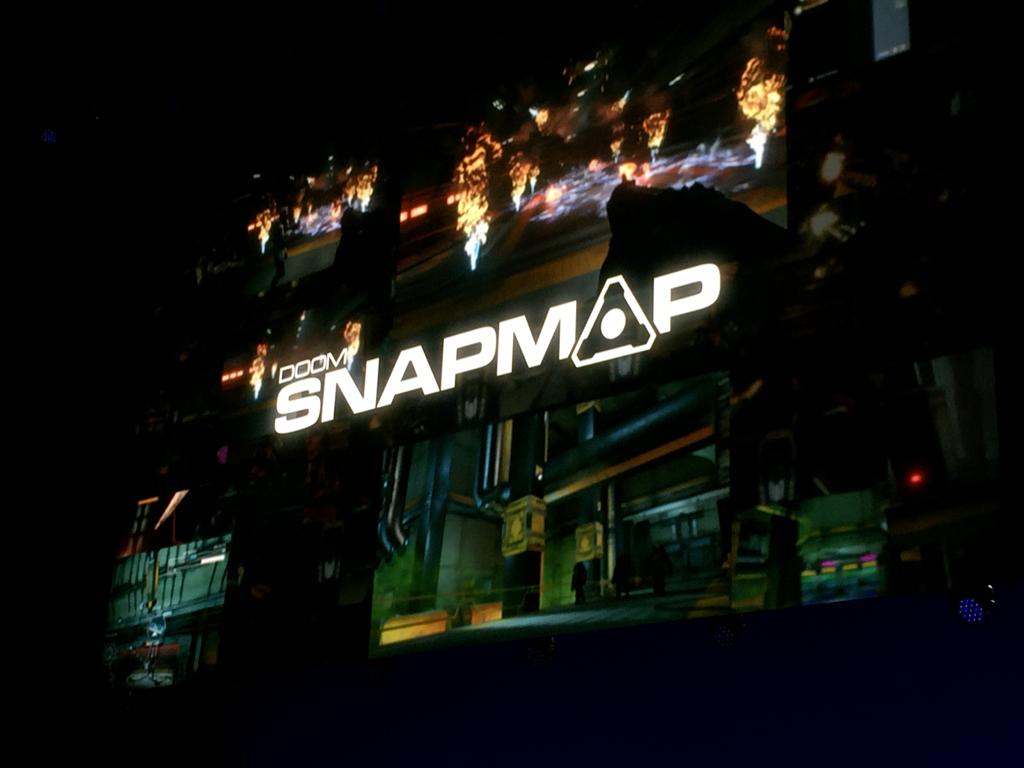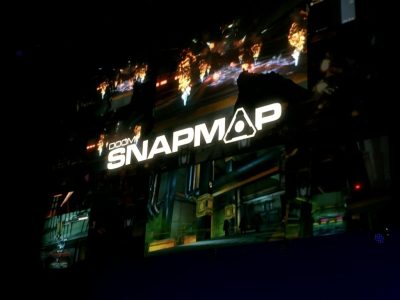Doom? DooM? DOOOOOOOOOOOOOOOM?
By far, my most excited moment throughout the whole of Bethesda’s press conference was the true reveal and showcasing of the next iteration from iD software’s brainchild, DooM. Dropping the 4 from the moniker, this latest entry showed more of the familiar Mars base scape, complete with vintage door opening sounds and chainsaws just lying around. Need a key card? Who needs an encoded piece of plastic when you can rip the right arm off a tech scientist and use that to gain entry? The heavy booming bass pounding through with each shotgun blast and industrial music backseat seemed to highlight the experience and make it all the more impactful.
While the first trailer looked pretty, it looked to run a bit slow for my tastes (and double jumping? I’m used to my Doomguy having his feet firmly planted to the floors at all times). It wasn’t until the gameplay demonstration (still pre-recorded, but I’ll let them off this time) on Mars that really let the game shine. A beautifully damaged landscape was easy to move around, a location that reminded me more of Bloodborne‘s Nightmare Frontier than that of a flaming, one-tone Hell. The game seemed to run much faster, much more fluid and true to that of a 60 FPS experience that I’ve come to know and love from the franchise. Doom at first glance looked like it rewarded the player for being bold and sticking with their attacks instead of trying to dive behind cover and regenerate some health. Visceral melee attacks (signified by a glowing downed enemy) frequently awarded the doomguy with additional health and ammo pickups. There were a TON of different ways to kill the various imps and demons throughout Hell although I did see some of the animations repeat in various ways.
Multiplayer is no stranger to the Doom series, nor is supporting a robust level creation tool. After all, nuts.wad wouldn’t exist if it wasn’t for the native support from id tech. New to the upcoming Doom is not only a level editor and creator but also that of tweaks and fundamental changes that could support the creation of new modes for the multiplayer side of the game. Some referenced tools included things that could add in things like a horde mode or almost RPG-like progression for the player controlled soldiers with procedural upgrades. Being able to switch directly from the creation tools and directly into a playable build of the game could help expedite the creation process and make it enjoyable for junior modders, not just on PC but also on that of Xbox One and PlayStation. A brief demonstration showed how quick the tools could be to work with, certainly deserving of the name Doom Snapmap.
Players wouldn’t have to wait very long to get their hands on Bethesda’s upcoming shooter, as Doom will be making its way onto both next gen platforms as well as PC in Spring 2016.


